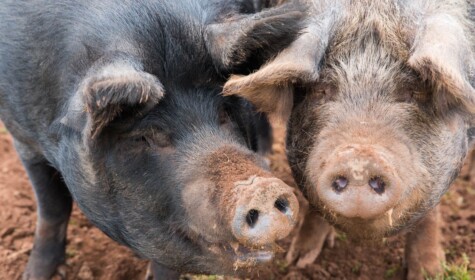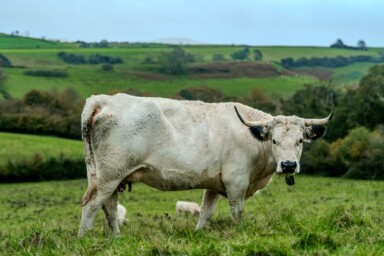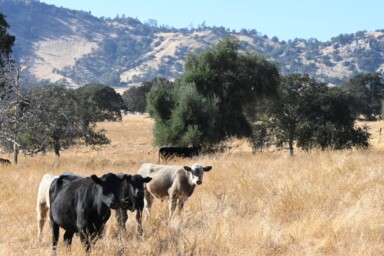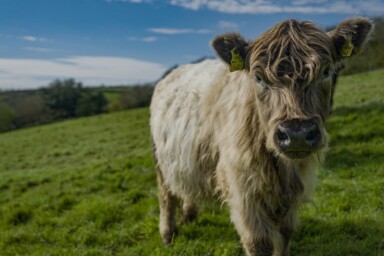Twenty-two years ago, British farming suffered its greatest catastrophe in living memory, when an outbreak of Foot and Mouth Disease ripped through large parts of the country. More than 6 million animals were culled and £8 billion of damage was caused to the UK economy, inflicting huge trauma on rural communities, the effects of which are still felt today.
While a lot of the blame for the crisis rests on the shoulders of a Government which could have handled the situation much better (where have we heard that before!), the outbreak itself was originally caused by badly cooked swill, which likely contained illegally imported meat infected with the virus. In response, the UK and then the EU banned the practice of feeding any food waste to pigs, unless it could be guaranteed to have had no contact with any meat – a ban that stands to this day.
It was a completely understandable reaction, given how poor the regulations around swill were at the time. Over recent years, however, the pressing need to tackle the environmental harms caused by pig production – as well as soaring feed costs – have led to growing calls to look again at the use of swill, spearheaded by the charity Feedback, as Japan and South Korea have done to huge success.
The value of swill
Perhaps the biggest win offered by a return to swill is the benefits this might have for the sustainability of pork production. For much of agricultural history, pigs have mainly been used as omnivorous recyclers of waste, an immensely valuable role they still play in many developing countries today. Since the Second World War, however, pig production in the Global North has dramatically intensified, with pigs moving away from their traditional role as ‘upcyclers’ of waste feeds, to a highly productive system where they are fed on grain and soya. While this shift has helped fulfil our insatiable appetite for meat, it’s come at a massive cost to the environment and animal welfare. For instance, a study into the impacts of the European pig sector – often held up as one of the world’s most efficient and eco-friendly – found that for every kilo of pork produced, €1.90 worth of damage is caused to the environment, which is significantly more than the average pig farmer earned per kilo, at the time of the study.
The UK’s pig sector, in fairness, has a better story to tell than most when it comes to environmental impact, animal welfare and antibiotic use, having achieved improvements in each of these areas over recent decades. Still, much more needs to be done on all these fronts, and the biggest problem to address, at least from an environmental perspective, is feed. More than three quarters of the carbon footprint of British pork relates to feed, partly because of the emissions generated by the nitrogen fertilisers sprayed onto grain crops (which cause a whole raft of other environmental harms too) but also because of the massive amounts of CO2 released by habitat destruction associated with overseas soya production.
Feeding grain to livestock doesn’t make sense
Feeding vast quantities of potentially human-edible grains to livestock also represents a deeply wasteful use of our finite, and increasingly degraded, arable resource. All livestock (including pigs and poultry, which are often seen as being more sustainable than ruminants because they can better convert grain into food) are highly inefficient at converting human-edible crops into meat, milk and eggs, and this means we have ended up in a situation where vast quantities of calories and nutrients potentially available for human consumption are instead lost from the food system. The scale of this wastefulness is frightening: 40% of global arable land is now used for feed crop production, an area which, if it were to be used instead for human food cropping, could provide enough calories for an additional 4 billion people.
Replacing some of this grain and soya with food waste would go some way to tackling these problems. One study found that replacing just 10% of conventional European pig and poultry feed with food waste would reduce habitat destruction and greenhouse gas emissions associated with feed production by more than 30% and 15% respectively. Another paper calculated that feeding swill to pigs would reduce the land use footprint of the European pig sector by more than 20%, freeing up an amount of grain equivalent to that consumed by 70 million EU citizens, while at the same time cutting the area of overseas land needed for soya by 268,000 hectares.
Improving profitability
Of course, it needs to be remembered that avoiding waste, and then redistribution, are the best options when it comes to tackling the 9.5 million tonnes of food wasted in the UK each year. But most studies find that the next-best use of food waste – ahead of composting and anaerobic digestion, where a lot of food waste is currently redirected – is as animal feed, especially when the biodiversity and carbon benefits of freeing up land which would otherwise be needed for feed production, is factored in.
Relegalising the use of swill could also improve the profitability of the UK’s financially stricken pig sector. Some of the industry’s woes are a result of Brexit, which over the past year has led to a chronic shortage of abattoir workers that culminated in the disgraceful cull of tens of thousands of pigs. But probably the biggest problem pig farmers have been facing recently is soaring feed costs. Feed has always been the single biggest cost for pig producers, but over the past two years, prices have spiked to unprecedented levels, in large part because of the knock-on impacts of Putin’s war in Ukraine. As a result, pig farmers have been posting heavy losses for months now, and this, in combination with the other challenges buffeting the sector, has caused the size of the breeding herd to fall by 20% over the last year.
Food waste, as a much cheaper source of feed, potentially offers something of a solution. In Japan and South Korea, swill is typically only half the price of conventional feed – a difference that is probably even greater now, given that this was the situation before the recent surge in feed costs. While the more variable nutritional quality of swill does mean that growth rates are often somewhat lower, the overall impact on profitability still tends to be a very positive one. And this is before the bonus of price premiums are considered: in Japan, for instance, pork produced from pigs fed on food waste is sold under the charming name of ‘yoghurt pig’, where it fetches a higher price because consumers are willing to pay for its environmental benefits.
Relegalising swill
Clearly, the relegalisation of swill offers major potential, but there are significant concerns which need to be properly addressed. The biggest of these is the associated disease risk. With Foot and Mouth still well remembered and the emergence of African Swine Fever a worrying development, the reticence expressed around the possible return of swill is completely understandable. However, the experience of Japan and South Korea (where no disease outbreaks have occurred since regulated swill processing was introduced decades ago) as well as the findings of a study involving academics and animal health professionals, has shown that it is absolutely possible to safely feed food waste that contains meat scraps to omnivorous livestock (i.e. pigs and chickens). Achieving this does, though, require a very different approach to the way swill was cooked and regulated in the UK previously. The template provided by Japan and South Korea is one based around systematically heating (and sometimes fermenting) food waste in centralised processing plants, where cross-contamination with untreated food waste can be safely avoided, and with this all underpinned by a robust regulatory and inspection regime.
Some have argued that even if this system were to prove safe in the UK, it might send the message to smallholder farmers that feeding untreated food waste is ok. But this overlooks the fact that a significant minority of smallholders already do this, so it seems unlikely that legalising a centralised system of food waste processing plants would make this is any worse.
Concerns around the impact on product quality and consumer acceptance are also unlikely to be major issues, though they do need to be properly investigated. Most studies have found no significant difference in meat quality between pigs fed on diets containing food waste versus those reared on conventional feeds, and when blind-tested, consumers haven’t noticed any difference in taste. And although there is a risk that the public might baulk at the thought of pigs fed on a diet which would potentially contain scraps of meat, there have apparently been no issues around this in Japan and South Korea. It’s also worth reiterating that pigs are omnivores that have thrived on food waste for as long as we’ve reared them. Their ability to consume food waste is, therefore, something we should be celebrating and communicating to the public, and not distancing ourselves from, as has unfortunately happened in the past.
Given all of this, its perhaps no surprise that most pig farmers in the UK appear to cautiously back a return to some form of swill feeding. In a recent survey of those involved in the pig sector, more than three quarters were supportive, with many citing the potential benefits for profitability and sustainability, though this was with the proviso that it could be done safely and affordably.
Ultimately, we need to keep the bigger picture in mind here. If we are to address the interrelated crises of climate change, biodiversity loss and poor public health, the role of livestock in our food system will need to change radically. Contrary to what is often claimed, livestock have a key role to play in a sustainable food system, but achieving this will require a move away from the intensive systems which supply so much of our meat, milk and eggs today. Feeding food waste to pigs can only go part of the way to achieving this. A wider shift in production practices (including a move towards higher welfare, pasture-based systems) as well as reductions in consumption, to accommodate the reduced livestock output a sustainable food system would entail, will all be needed. This won’t be easy, but if we can achieve it, the benefits for human and planetary health will be massive.







